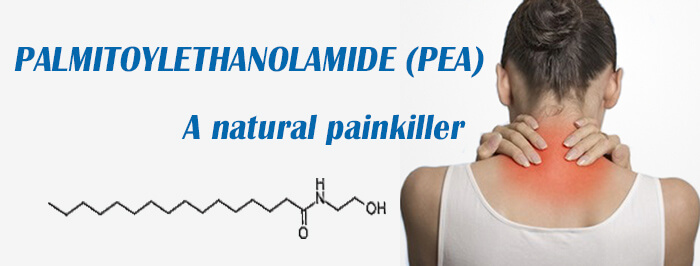What is Palmitoylethanolamide

What is Palmitoylethanolamide (PEA)?
Product name: Palmitoylethanolamide
Other name: N-PEA, Palmitylethanolamide, Palmidrol, Hydroxyethylpalmitamide
CAS No.: 544-31-0
Appearance: white powder
Molecular Formula: C18H37NO2
Molecular Weight: 299.49
Palmitoylethanolamide (PEA) is an endogenous fatty acid amide, a naturally occurring compound that plays a significant role in intracellular signaling mechanisms. In humans, palmitoylethanolamide is produced primarily as a biological repair mechanism, and thus serves as an effective modulator of inflammation and chronic and/or nerve pain. Palmitoylethanolamide is not addictive, not psycho-active, and today, it is widely used in sports nutrition supplements and joint health formulas.
Besides human, PEA also exists in many animals and plants. The highest amounts can be found in soy lecithin, soybeans, egg yolk, peanuts, and Medicago sativa. This fatty acid can safely boost your natural cannabinoids and protect the nerves throughout your body. Its benefits are encouraging for a wide range of difficult-to-treat disorders.
How does Palmitoylethanolamide (PEA) work?
Palmitoylethanolamide is involved in several mechanisms of action to deliver pain-reducing and anti-inflammatory benefits. It increases the endogenous levels of AEA (anandamide) and 2-AG (2-arachidonoyl-glycerol) through the inhibition of the activity or expression of FAAH, or via additional unknown mechanisms, which directly activate CB2 and TRPV1 receptors (transient receptor potential vanilloid type-1 channel). PEA, possibly through allosteric modulation of TRPV1 receptors, potentiates the actions of AEA and 2-AG at TRPV1 receptors.
PPAR-α and GPR55 are direct receptors. The PPAR-a receptor mediates mood, pain, and neuroinflammation. PEA bound to PPAR-a receptors forms heterodimers with retinoic acid receptors. The dimer acts as a transcription factor promoter of peroxisome proliferator response elements. Activation of PPAR-a increases the production of intracellular neurosteroids, which alters calcium channels and big conductance potassium channels leading to hyperpolarized neurons. This accounts for the antiseizure activity of PEA in animal models.
PEA blocks the excessive activity of mast cells and glial cells and restores their normal activity. By the way, PEA also cuts down the activity of the pro-inflammatory enzyme COX. There are more mechanisms showing how PEA works
Palmitoylethanolamide (PEA) Benefits
As a natural painkiller and anti-inflammatory, palmitoylethanolamide (PEA) offers hope for a lot of people suffering from chronic and neuropathic pain. Except this benefit, Palmitoylethanolamide may offer potential benefits for your personal health. There are some benefits for reference:
.Reduces Pain and Inflammation
.Enhances Brain Health and Regeneration
.May Protect Your Heart
.May Fight the Common Cold
.May Reduce Depression Symptoms.
.Reduces Symptoms of Multiple Sclerosis
.Reduces Histamine Release
.Relieves Arthritis
.Reduces Gut Inflammation

Is Palmitoylethanolamide (PEA) safe ?
Yes , Palmitoylethanolamide (PEA) is completely safe .
As we just said before above, PEA naturally exists in human body, many animals and plants. Therefore it is safe when we take it as a nutrition supplement. In some European countries like Italy, Germany, and Spain, PEA is commercially advertised as dietary food for special medical purposes (AFMS). And in the United State, PEA is also marked as a dietary supplement
Where to buy Palmitoylethanolamide (PEA) ?
Purelife bio supplies Palmitoylethanolamide raw powder with NLT 98% purity , it is stocked in both of our China and USA warehouses all the time, if any product info you need ,such as specification sheet, COA, pricing quotation and test spectrum , welcome to contact us for details .
Our specifications of PEA include :
- PEA powder
- Micronized PEA
- Micronized PEA Granule
Micronized PEA has much better bioavailability and gastroenteric absorption
But micronized powder floats easily , so for a capsule application , the deviation rate of encapsulation is high, and filling dose is small when encapsulating , .
Micro granule solves this problem well :
- Easy to fill,
- Improve the filling dose & accuracy per unit volume.
And when the granule is dispersed in the stomach, micro powder advantage (high absorption & bioavailability) still exist .


